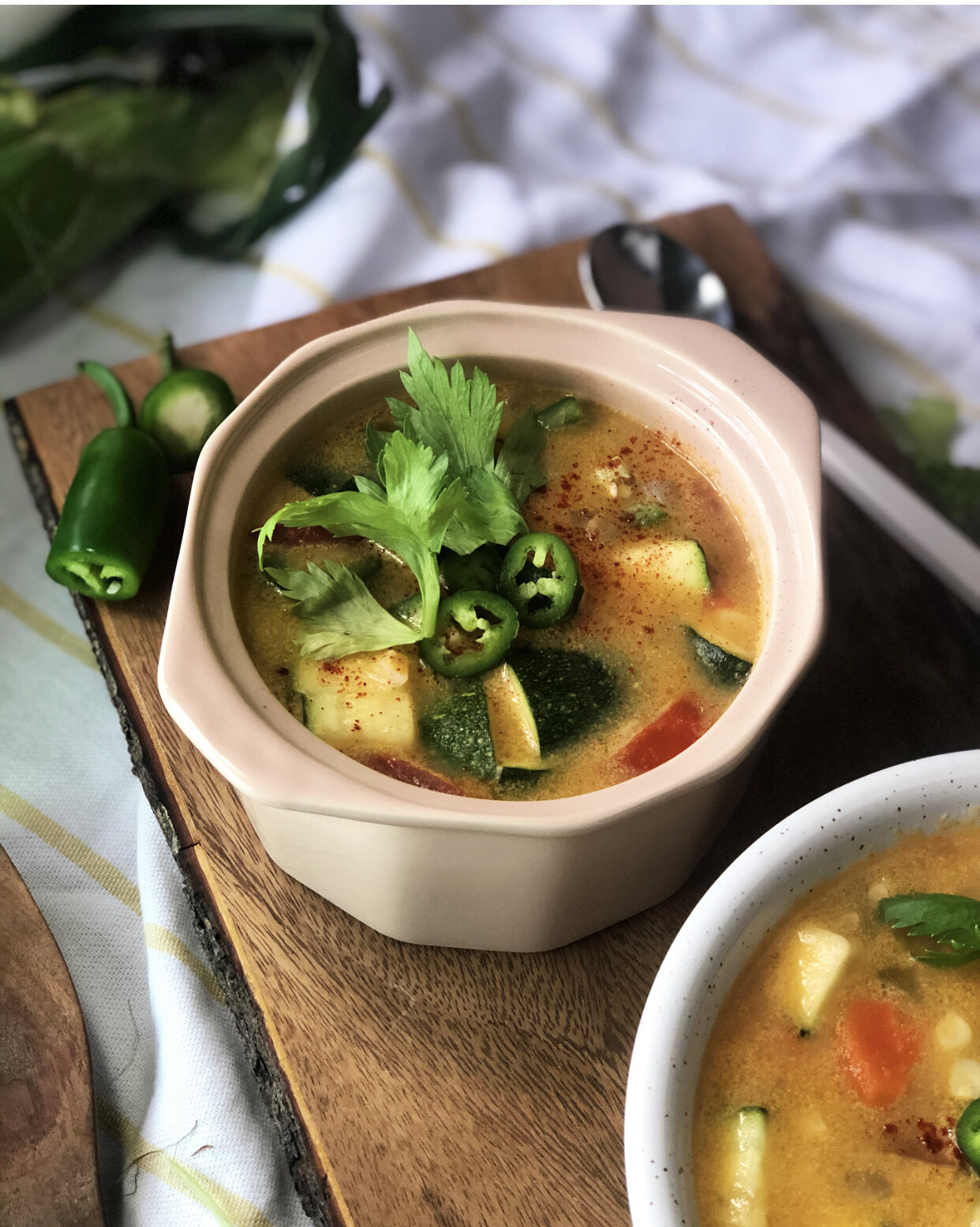The Best Summer Corn Chowder
About five years ago, I made a reaallly good corn chowder with zucchini, potatoes and all kinds of other summer vegetables. The next year, I looked all over for the recipe I used but couldn't find it anywhere. I searched my Pinterest, a million blogs, random stacks of paper around the house, and everywhere else I could think of, all without luck.
After making several disappointing chowders, I gave up on corn chowder for a few years. But this year, I wanted to try again. I decided to start from the ground up, trying to recreate that perfect chowder from memory. I wanted it to be creamy, full of vegetables and have super simple methods. It took a bit of tweaking, but I finally made the perfect chowder.
I loaded the soup with onions, celery, carrots, garlic, potatoes, corn, zucchini, tomatoes AND a jalapeño to make the most of summer produce. For the methods, I made the soup extra creamy by blending half of it (before adding in the corn, of course - I wanted to let the kernels shine) and adding in a can of coconut milk. Don't worry; it doesn't taste coconut-y, just creamy, healthy and satisfying.
Let me know what you think of the recipe in the comments and don't forget to follow the sustainability tips below!
Time: 40 minutes
Makes: 8-12 servings of soup
Ingredients
1/2 large onion (about 5 inches in diameter) or 1 whole small onion
2 celery stalks
2 large carrots
2 large garlic cloves
2 tablespoons olive oil
5 small potatoes, or about 2 large potatoes
4-6 cups vegetable broth or water
If you like a thicker soup, use 4 cups. If you want it thinner, use 6 cups.
2 teaspoons smoked paprika
4 ears of corn
2 medium zucchini
3 plum tomatoes
1 jalapeño (optional)
1 13.5-ounce can of coconut milk
You could also use 1 1/2 cups of light or heavy cream or cows' milk here. Avoid nut milks because they tend to separate when heated.
Methods
Chop the onion, celery stalks and carrots into small pieces, about 1 centimeter in length, and mince the garlic cloves. In a large pot over medium heat, add the onion, celery, carrots, garlic, olive oil and a few generous pinches of salt. Cook for about 5 minutes or until the onion is translucent, stirring frequently to avoid burning. While those are sautéing, cut the potatoes into 1-inch pieces.
After the onion mixture has sauteed, add the potatoes, water or vegetable broth and smoked paprika to the pot. Turn the heat to medium-high and bring to a boil. Once it boils, turn heat to low and let simmer for about 20 minutes, or until the potatoes have softened.
While that simmers, chop the zucchini and tomatoes into 1-inch pieces, dice the jalapeno and cut the corn off the cob. Set these aside. Then, use the back of your knife to scrape the corn cob juices and the corn kernels' roots into the pot. Doing this makes the soup more flavorful (and it's kind of fun).
Carefully remove about half of the soup from a pot and transfer it to a blender. If you do not have a blender, transfer it to a large bowl. Blend, immersion blend or mash half of the soup until it is very smooth. If you are using a blender, be very careful - the heat from the soup might cause the blender lid to lift. To avoid this, remove the center of the blender lid, and if you'd like to be extra cautious, only blend 1/4 of the soup at a time.
Return the blended soup to the pot. Add the zucchini, tomatoes, corn and jalapeño to the soup. Let simmer for another 5-10 minutes, or until the zucchini is soft. Then, stir in the coconut milk until fully incorporated. Taste and add more salt, smoked paprika or pepper as desired. Dig in!
Sustainability Tips
Vegetables: Make this salad when all the produce is in season (pst! that's summer!). Doing this will make it easier to find local and organic produce. Buying organically and locally cuts down on pesticide contamination and can help you get to know your local food producers.
Corn cobs and husks: Don't toss the husks and cobs in the trash! For the husks, composting them is the most sustainable option. Composting gives your scraps the air they need to decompose without emitting greenhouse gases like methane. For the cobs, you can either compost them or freeze them for later use in homemade vegetable broth.
Vegetable broth: Homemade vegetable broth is the most sustainable option because it will help you cut down on food waste and packaging waste. The Kitchn has a great vegetable stock tutorial!



